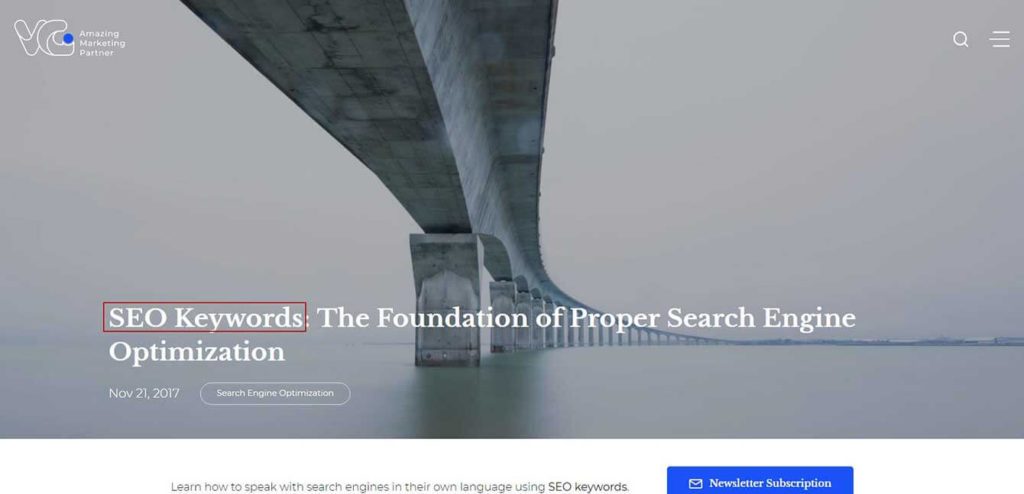SEO this, SEO that. How about we moved from basic recommendations to practical tips on your website optimization?
SEO: What You Need to Know About It
Search engine optimization for your website is like a healthy, balanced diet for an overweight couch potato. It rids you of all the fat while keeping all the vitamins and nutrients in the system, thus making your body healthier. And a healthy body is able to achieve much more.
On the outside, you’ve got changes in your figure, which inevitably lead to the opposite (or same – I don’t care) sex taking an increasingly profound interest in you. Hey, it’s more than just the sexes – people like fit people. It’s the way our culture works right now.
A few centuries ago, having a huge belly was actually a synonym of wealth and prosperity. Who knows, maybe in the future people with long, petite fingers will dominate the beauty pageants since they will be more adept at typing messages?

What Does SEO Bring to the Table?
Anyway, where were we? Right, SEO does a great job at grooming your website and making it look great in the cold, lifeless eyes of the search engine algorithms (figuratively speaking).
Also, a well-done SEO:
- increases traffic to your website;
- brings you targeted visitors who have a natural interest in your website content;
- builds your website authority and trust;
- establishes important connections with other resources;
- increases your brand recognition and awareness;
- makes your smile happily when you open your Google Analytics account in the morning.
All quite nice things, if you ask me. Definitely worth trying.
DIY SEO: Is It Possible?
«DIY» stands for «do it yourself». SEO is not a rocket science, really, so some parts of it can be easily done by anyone who owns a website.
However, when it comes to quick, guaranteed results in a limited time period, your best option is to hire a professional SEO specialist.
Plus, the search ranking criteria have a tendency to get changed every now and then making it hard for people who are not keeping their finger on the pulse of the IT industry.
That’s why we’re bringing you these 14 tips and tricks that are currently hot so you can easily use any of them for your website optimization to get results.
Website Optimization: Top 14 Tips and Tricks for Better User Experience and SEO
In no particular order, we present you the list of improvements and changes that ought to make both search engines and users love your website.
Important note: no SEO technique that leads to poorer user experience is worth implementing so make sure you don’t mess up your website in the search for quick traffic.
1. Use SEO-Friendly URLs
The times when people were stuffing keywords in the titles of the articles on their websites are long gone. Google has gotten smarter and does not take the whole URL into account, just the first 3-5 words.
So, in order to earn love from Google, all you need to do is avoid:
- ugly URLs like this: yourwebsite.com/a_137476
- Keyword-heavy URLs like this: yourwebsite.com/website-optimization-seo-how-to-keywords-techniques-2018-search-engine-optimization-google-please-gimme-me-love
2. Start the Title Tag on Your Page With a Keyword

Title tags are one of the most important factors of your on-page SEO so use them wisely. The basic logic is pretty simple – the closer you put your main keyword to your title tag, the better for site optimization.
You don’t always have to start your titles with the main keyword but as long as it’s there in the title tag, it should be alright.
3. Add Various Sexy Modifiers to Your Title
This is pretty obvious. For every imaginable piece of content, there are probably dozens (if not hundreds or thousands or millions) of variations, all bearing more or less the same title.
How do you, reader, and Google know what’s best? By paying closer attention to the other words in the title, besides the obligatory keyword. If they contain something that sets that article apart from the rest, then it’s worth reading.
To benefit from this knowledge, be sure to add words like «best», «top», «guide», «how to», «2018» and certainly don’t forget about the so-called magic words like «new», «free», «ultimate», «amazing» and so on.
If you ever run out of imagination, head on to the official Apple website – these guys sure know how to write great, sexy titles.
4. Make Sure Your Title Is Wrapped in the <h1> Tag
If you are using one of the popular content management systems (like WordPress), it should be done automatically.
However, sometimes it is not – so make sure you check it manually by opening up your website code, finding the article title and adding an <h1> tag to it.
5. Utilize More Multimedia on Your Page
Text content is fine and can provide users with the information they are looking for. However, we often like to have ourselves entertained a bit with other types of content – like images, videos, infographics, diagrams, and other engaging stuff.

Have you ever seen one of them animated ads on some websites prompting you to «kill the dragon» or «choose your winnings»? Now that’s what I call engaging! These seemingly stupid ads are in fact very effective because:
- they attract attention
- they engage users
- they targeted and relevant

And don’t forget about the videos, too. Especially if they are relevant and funny – like this one. It helps to reach website optimization better.
6. Wrap Your Subheadings in H2 tags
Another must-have thing for any article/page on your website. First of all, make sure you USE subheadings at all because they allow readers to scan through the content easier and find the information they’re looking for faster.
Then, use your keyword in one of these subheadings and wrap it up in an <h2> tag.
7. Use Your Keyword in the First 100 Words of the Copy
As easy as it sounds – just do it. This will indicate the relevance of your article to the declared keyword.
8. (For the Love of All That Is Holy), Make Your Website Mobile-Friendly
If your website is still not mobile-ready, stop reading this article right now, go find a developer who will optimize your website for mobile devices, and then proceed to the rest of the list.
Websites that are not mobile-friendly get penalties from Google (apart from providing poor UX to their visitors).
9. Use More Outbound Links
Referring to other websites and resources is a good way of building your website authority. It’s like making friends with people – the more you have the better.
A rule of thumb is to have an outbound link for every 300-500 words.
10. Provide Internal Links for Every Piece of Content Your Have
How do you think Wikipedia got so popular? They have tons of internal links on every page!
Well, not only because of that but still – the point is valid. Having 3-5 internal links per article is more than enough.
11. Increase Your Page Load Speed
Analyze your website speed using services like GTmetrix and rectify any problems that you may find.
12. Use LSI Keywords in Your Copy (Extensively)
LSI stands for «latent semantic indexing». Basically, it means that, besides your main keywords, there are words that are commonly associated with similar content on the web.
Including LSI keywords in your content is vital to good SEO and helps your website optimization.
13. Optimize Your Website Images
That means including your target keywords in the Alt text for at least one of the images on the page.
14. Feature Social Buttons Prominently on Your Pages
Does that even need an explanation? When people «like» and «share», they boost your website trust, which is one of the top three Google ranking factors.
If you haven’t added social buttons to your pages yet, do it immediately.
Conclusion
That’s it! Thanks for getting to the end of today’s «Website Optimization: What It Is and Where to Start – a Guide for Beginners» article!
I hope it helped you get some new ideas for your own website SEO plus maybe a few giggles while you were reading it.
The right thing to do would be share this article with your friends on the social networks – just click on one of the icons of social media, it’s that easy.
If you have further questions on the subject, please write them in comments – I’ll be glad to answer.
If you’re up for more articles about SEO, be sure to check out these first:





Comments0